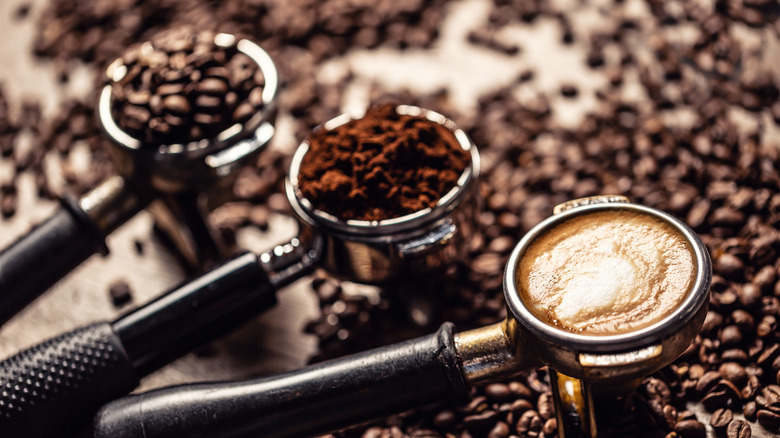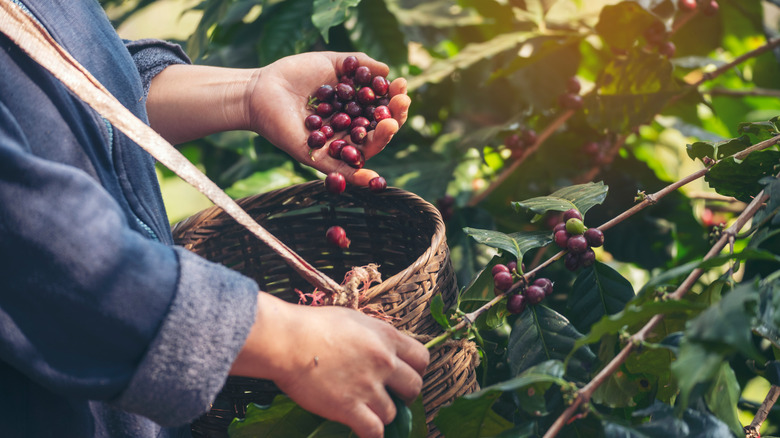What Makes Peruvian Coffee So Special?
The history of coffee in Peru has been tumultuous. Homegrounds explains that even though Peru has grown coffee since the 1700s, it's not been known as a coffee powerhouse like Brazil or Colombia. In part, Peru isn't better known among coffee connoisseurs because the country's relatively poor infrastructure and limited processing methods can result in inconsistent quality.
When coffee prices crashed in the 1990s, it made Peruvian coffee even less lucrative than it had been before, leading coffee farmers to opt for more profitable crops like cacao, and political instability and guerrilla warfare made growing coffee for minuscule profits even less appealing for farmers. As the turn of the century approached, it wouldn't have been a stretch to predict the continued decline of the Peruvian coffee industry, but according to Driven Coffee Roasters, a variety of organizations have invested in coffee-growing regions of Peru, encouraging growers to organize into co-ops and promoting Fair Trade coffee. One feature of Peruvian coffee distinguishes it from other growing regions, though.
Delicious coffee beans are grown at both high and low elevations
While coffee beans grown at high elevations typically get the best press, Peru's lower altitude farms can deliver a satisfying cup of coffee as well. Beans grown near the town of Nambale, not far from the border between Peru and Ecuador, are described by Driven Coffee as having "mild acidity, medium body, and smooth notes of nuts, flowers, and gentle fruit."
Much of the coffee grown in Peru is farmed organically, not as a marketing tool, but simply because that's the way it's always been done. As ethical importers and exporters of coffee have begun ensuring that organic growing standards are being met, we've seen more certified organic beans from Peru on the market, along with more Fair Trade beans. Co-ops like Cenfrocafe, which brings together 2000 farmer members, sell 100% Fair Trade beans, ensuring its farmers can earn livable wages. Most of the coffee farms in Peru are tiny, about seven acres in size, so co-ops help farmers access processing facilities and gain economies of scale.
Peru's high elevation regions really shine
High in the Andes Mountains, small farms produce exceptional coffee beans in a number of regions like Urubamba, Chanchamayo, Quechua, Amazonas, and Cusco. Homegrounds explains that a number of these high-elevation farms produce beans that are wet processed and described as refined, medium-bodied, smooth, and with rich chocolate and nutty notes. Driven Coffee praises Peruvian high-elevation coffee as having "bright acidity, vibrant floral aromas, and a rich sweetness." The artisan roaster elaborates: "These are more likely to be specialty-grade beans, and the ones we fight other roasters for."
Even big coffee operations like Nespresso see Peru as a world-class source of premium coffee, and in 2015, they released a Limited Edition Peru Secreto Grand Cru coffee. As you explore the world of coffee, try adding some Peruvian selections to your journey. And if you're feeling both adventurous and a bit spendy, you can try the coati dung coffee made by Chanchamayo Highland Coffee. Durand's team of 60 coati eat his high-elevation coffee cherries and pass the partially fermented beans through their digestive tracts. The beans are harvested again and sold by Durand for $36 per pound and by the final vendor for $270 per pound!


